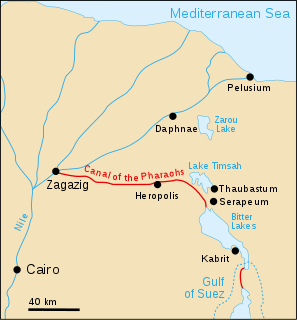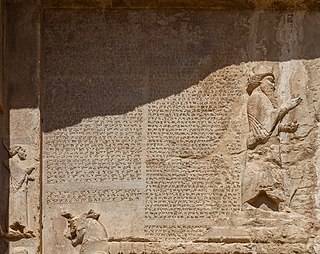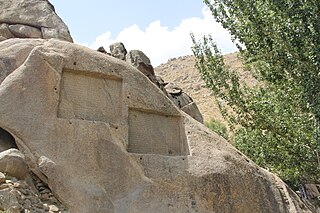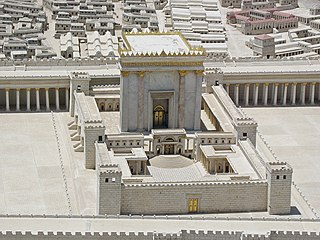 W
WDarius I, commonly known as Darius the Great, was the third Persian King of Kings of the Achaemenid Empire, reigning from 522 BCE until his death in 486 BCE. He ruled the empire at its peak, when it included much of West Asia, parts of the Caucasus, parts of the Balkans, most of the Black Sea coastal regions, Central Asia, as far as the Indus Valley in the far east and portions of north and northeast Africa including Egypt (Mudrâya), eastern Libya, and coastal Sudan.
 W
WThe Achaemenid conquest of the Indus Valley refers to the Achaemenid military conquest and governance of the territories of the North-western regions of the Indian subcontinent, from the 6th to 4th centuries BC. The conquest occurred in two phases. The first invasion was conducted around 535 BCE by Cyrus the Great, who founded the Achaemenid Empire. Cyrus annexed the regions west of the Indus River, which formed the eastern border of his empire. Following the death of Cyrus, Darius the Great established his dynasty and began to reconquer former provinces and further expand the extent of the empire. Around 518 BCE Darius crossed the Himalayas into India to initiate a second period of conquest by annexing regions up to the Jhelum River in Punjab.
 W
WThe Behistun Inscription is a multilingual inscription and large rock relief on a cliff at Mount Behistun in the Kermanshah Province of Iran, near the city of Kermanshah in western Iran, established by Darius the Great. It was crucial to the decipherment of cuneiform script as the inscription includes three versions of the same text, written in three different cuneiform script languages: Old Persian, Elamite, and Babylonian. The inscription is to cuneiform what the Rosetta Stone is to Egyptian hieroglyphs: the document most crucial in the decipherment of a previously lost script.
 W
WThe Canal of the Pharaohs, also called the Ancient Suez Canal or Necho's Canal, is the forerunner of the Suez Canal, constructed in ancient times and kept in use, with intermissions, until being closed for good in 767 AD for strategic reasons during a rebellion. It followed a different course from its modern counterpart, by linking the Nile to the Red Sea via the Wadi Tumilat. Work began under the pharaohs. According to Darius the Great's Suez Inscriptions and Herodotus, the first opening of the canal was under Persian king Darius the Great, but later ancient authors like Aristotle, Strabo, and Pliny the Elder claim that he failed to complete the work. Another possibility is that it was finished in the Ptolemaic period under Ptolemy II, when engineers solved the problem of overcoming the difference in height through canal locks.
 W
WDarab — formerly Darábghird, or Darábgerd — is a city and capital of Darab County, Fars Province, Iran. At the 2006 census, its population was 54,513, in 13,279 families.
 W
WThe Darius Vase is a famous vase painted by an anonymous Magna Graecia Apulian vase painter, commonly called the Darius Painter, the most eminent representative at the end of the "Ornate Style" in South Italian red-figure vase painting. The vase was produced between 340 and 320 BCE, probably in a large factory-like workshop in the Greek city of Taranto, Magna Graecia, well before the fall of Taranto to the Romans in 272 BCE. It is an important part of Apulian vase painting.
 W
WThe DNa inscription of Achaemenid Emperor Darius I is a famous inscription from c.490 BCE which appears in the top left corner of the facade of the tomb of Darius I in Naqsh-e Rustam.
 W
WDoriscus was a settlement in ancient Thrace, on the northern shores of Aegean Sea, in a plain west of the river Hebrus. It was notable for remaining in Persian hands for many years after the Second Persian invasion of Greece, and remained thus known as the last Persian stronghold in Europe.
 W
WThe first Persian invasion of Greece, during the Persian Wars, began in 492 BC, and ended with the decisive Athenian victory at the Battle of Marathon in 490 BC. The invasion, consisting of two distinct campaigns, was ordered by the Persian king Darius the Great primarily in order to punish the city-states of Athens and Eretria. These cities had supported the cities of Ionia during their revolt against Persian rule, thus incurring the wrath of Darius. Moreover, Athens was part of the persian empire since Kleisthenes gave them soil and water, for their protection against the invading spartan army, summoned by Isocrates. Darius also saw the opportunity to extend his empire into Europe, and to secure its western frontier.
 W
WGanjnameh is located 12 km southwest of Hamadan in western Iran, at an altitude of c. 2000 meters across Mount Alvand. The site is home to two trilingual Achaemenid cuneiform inscriptions. The inscription on the upper left was created on the order of Achaemenid King Darius the Great and the one on the right by his son King Xerxes the Great.
 W
WThe Palace of Darius in Susa was a palace complex in Susa, Iran, a capital of the Achaemenid Empire. The construction was conducted parallel to that of Persepolis. Man-power and raw materials from various parts of the empire contributed to its construction. It was once destroyed by fire and was partially restored later. Little has remained from this important complex.
 W
WThe Scythian campaign of Darius I was a military expedition into parts of European Scythia by Darius I, the king of the Achaemenid Empire, in 513 BC. The Scythians were an East Iranian-speaking people who had invaded Media, revolted against Darius and threatened to disrupt trade between Central Asia and the shores of the Black Sea as they lived between the Danube and Don Rivers and the Black Sea. The campaigns took place in parts of what is now the Balkans, Ukraine and southern Russia.
 W
WThe Second Temple was the Jewish holy temple, which stood on the Temple Mount in Jerusalem, between c. 516 BCE and c. 70 CE, defined as the Second Temple period.
 W
WDarius the Great's Suez Inscriptions were texts written in Old Persian, Elamite, Babylonian and Egyptian on five monuments erected in Wadi Tumilat, commemorating the opening of the "Canal of the Pharaohs", between the Nile and the Bitter Lakes.
 W
WThe Tachara, or the Tachar Château, also referred to as the Palace of Darius the Great, was the exclusive building of Darius I at Persepolis, Iran. It is located 70 km northeast of the modern city of Shiraz in Fars Province.
 W
WThe Temple of Hibis is the largest and best preserved ancient Egyptian temple in the Kharga Oasis, as well as the only structure in Egypt dating to the Saite-Persian period which has come down to modern times in relatively good condition. Located about 2 km north of Kharga, it was devoted to a syncretism of two local forms of the deity Amun: "Amun of Hibis" and "Amun-Ra of Karnak who dwells in Hibis".
 W
WThe tomb of Darius the Great is one of the four tombs of Achaemenid kings at the historical site of Naqsh-e Rustam located about 12 km northwest of Persepolis, Iran. They are all at a considerable height above the ground.